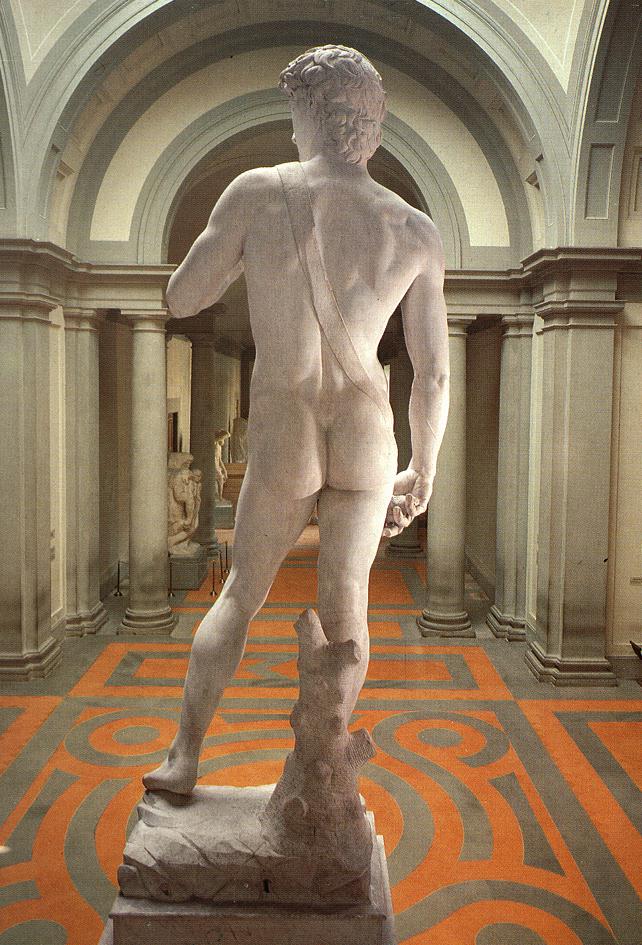(Italian pronunciation: ga-lay-ree-ah del-ahk-kah-day-mee-ah)

view a short movie clip showing an accordian player performing near the Galleria (mov. format - 4.4 mb)

view a short movie clip showing an accordian player performing near the Galleria (mov. format - 4.4 mb)
The Gallery houses an extremely important collection of sculpture by Michelangelo. The room that leads to the tribune, hung with tapestries, contains the Palestrina Pieta, whose attribution to Michelangelo is controversial, the unfinished St. Matthew, made for the Florentine cathedral, and the four Prisons, which were meant for the tomb of Julius II in St. Peter's in Rome (never finished). At the center of the spacious Tribune is the original of the David (1501-1504) commissioned from the great sculptor to replace Donatello's Judith on the balustrade of the Palazzo dei Priori.

St. Matthew
 |
Upon entering the Gallery of the Accademia the sheer colossal size of Michelangelo's statue of David literally dominates the whole collection. Sitting in a vaulted space that allows the visitor a free and unencumbered view of the statue from all angles, the grandeur of the statue is further enhanced by the statues turned head and intense gaze. One of the most popular tourist attractions in Florence, Michelangelo's David had a very checkered past. The masterpiece was sculptured by Michelangelo for a commission provided by the Opera del Duomo. The block of marble from which Michelangelo carved David was rejected by other sculpturors because of the numeorus veins that ran through the stone, where the stone could fracture easily making the work of the sculpture almost impossible. It's incredible to think that not only did Michelangelo overcome these probelms, but actually utlized 85% of the stone from the original slab of marble in the finished statue of David. Upon completion the importance of the statue was immediately realized when a commission that included Leonardo di Vinci, Botticelli and other great artists decided to place the Statue of David just outside the front door of the Palazzo Vecchio. Galleria sculpture images
|
|

 |
The Statue was quickly heralded as a symbol of the city of Florence
that represented the liberty of the city in the form of the sacred figure
of David. And the placement at the entrance of the Palace of the Lords
have strong civic overtones that gave a physical representation of the
pride and beliefs of the Florentines.
The perfection of the physical details of David, despite the statue's immense proprotions, reflect the studies of a young Michelangelo of anatomy on cadavers which was trictly forbidden at that time. This particular eye for detail that so epitomizes the work of Michelangelo is also apparent on the rear of the statue which is quite exceptional in the fact that most statues at those times were built to stand in a niche or with their back to a wall and so most sculptures paid little attention to detail on this part of a statue. But, because Michelangelo had no idea where this statue would eventually stand he created a truly complete work of art. |
|


Rape of the Sabines by Giambologna